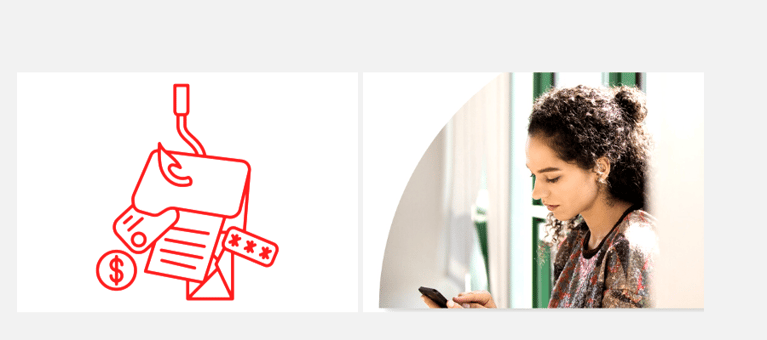Why Adopt Zero Trust at your Small Business?
As a small or medium-sized business, protecting your sensitive data and systems from unauthorized access should be a top priority. One effective way to do this is by implementing a zero trust security model.
Zero trust is a security model that assumes that no one should be trusted by default, and that all access to sensitive data and systems should be strictly controlled. This means that even if someone has been granted access to a network or system, their actions are constantly monitored and any suspicious activity is immediately flagged and prevented.
Vendors, like Microsoft are now relying on this model. They define Zero Trust as a model “that assumes breach and verifies each request as though it originates from an open network. Regardless of where the request originates or what resource it accesses…"
“Zero Trust teaches us to ‘never trust, always verify.’”-Microsoft
By implementing a zero trust model, you can help protect your business against cyber attacks, data breaches, and other security threats. This is especially important for small and medium-sized businesses (SMBs), which are often targeted by cyber criminals because they may have weaker security defenses than larger companies.
In addition to protecting your business from security threats, a zero trust model can also help you comply with various regulations and standards that require strict controls over access to sensitive data. This is important for businesses that operate in regulated industries, such as finance and healthcare, where non-compliance can result in significant fines and reputational damage.
Furthermore, implementing a zero trust model can help improve your overall security posture and gain the trust of your customers and partners. This is important for businesses that handle sensitive customer data, as customers are increasingly concerned about the security of their personal information. By demonstrating your commitment to protecting your customers' data, you can gain a competitive advantage and build stronger relationships with your stakeholders.
Zero Trust in the Hybrid Workplace
The quick shift to remote work due to the pandemic created a massive opportunity for cyber criminals. The security solutions that most small businesses had in place did not provide a strong defense against the majority of cyber attacks in remote environments. During this widespread move to hybrid work, new types of threats emerged that are now best defended against with the adoption of the Zero Trust model.
According to Microsoft’s latest Digital Defense Report, the most common types of cyber attacks on hybrid businesses are:
- Email compromise
- Malware that appears like a legitimate software update
- Ransomware-as-a-service (RaaS) which uses a partner network to carry out a cyber attack
- Increased attacks targeting on-premise systems

70% of all data breaches are the result of email phishing. -Barracuda
At Nucleus, we’ve been educating our clients on email phishing, spear phishing and overall, cybersecurity awareness for years. It is this “human” layer that remains a number one threat within a hybrid workforce. The risk of malware, RaaS and on-premise attacks can be reduced with the implementation of MFA, use of managed devices and more advanced security tools, best practices and policies.
- Multifactor Authentication (MFA): Eliminates the needs for passwords. Biometrics can further strengthen the authentication of a user’s identity.
- Managed Devices: Only managed devices should be used to access company resources. Patches and updates are deemed regular maintenance under managed services agreements.
- Managed Security: Multi-layered managed security tools that continuously monitor your current state of security are critical in hybrid work environments.
What areas Need to be Protected?
Today’s hybrid organizations are increasingly relying on cloud-based services; modern businesses need an IT security solution that protects people, devices, apps and data anytime, anywhere. Below is a list of the areas outside the traditional business network boundaries that require a different set of security tools:
Identities: When an identity attempts to access a company resource, that identity must be verified with authentication. Verify and secure all user’s identities with strong MFA and Single Sign-On.
Endpoints: All users, apps and endpoints need to be secured. Once an identity has been verified, information can flow to smartphones, managed devices etc.
Applications (APIs): Control and secure access to all critical APIs whether on-premise or modern software solutions.
Data: Protect your data wherever it is. Data needs to be protected even if it flows throughout these critical areas of defense.
Infrastructure: Continue to defend your infrastructure as it remains a critical threat vector. Modern security tools can be used to strengthen your defense that monitor, detect, block and flag attacks.
Network: All data is access over network infrastructure and and networks should be protected with real- time threat protection, end-to-end encryption, monitoring, and analytics.
Adoption of the Zero Trust model is happening in phases among SMBs. Many SMBs that have embraced hybrid work post-covid have or have immediate plans to implement MFA and SSO. Overall, implementing a zero trust model is an important step for any business that wants to protect its sensitive data and systems, comply with regulations, and gain the trust of its customers and partners. By investing in a zero trust model, you can help ensure the security and success of your business.
If your business needs advice on your cybersecurity planning, or if you are interested in an assessment, please reach out to us.


